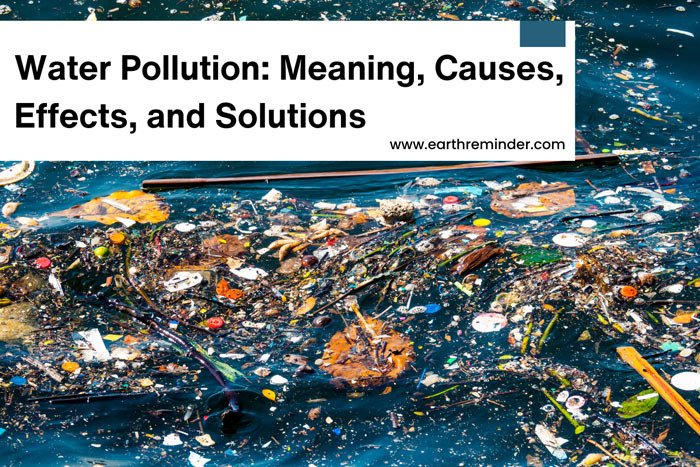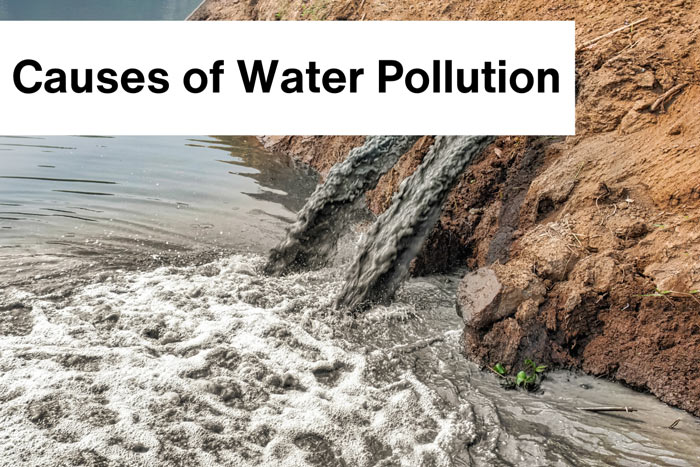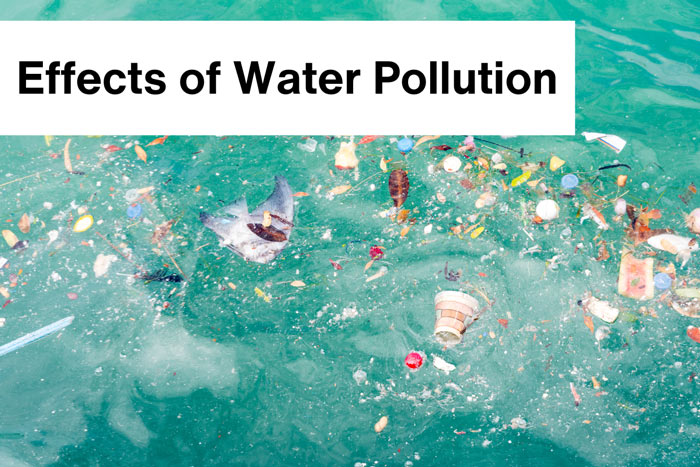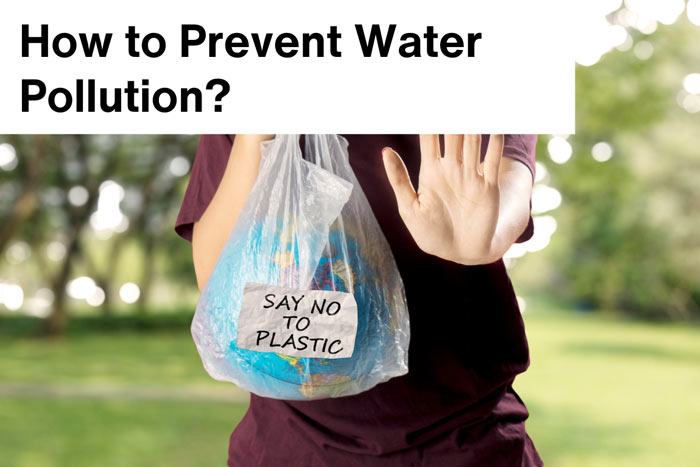Water Pollution: Meaning, Causes, Effects, and Prevention
Water is vital for the sustenance of all life forms on Earth. However, despite its fundamental importance, our water sources are increasingly threatened by pollution. Water pollution is a global concern that jeopardizes not only human health but also the delicate balance of ecosystems. In this blog, we will delve into the meaning of water pollution, explore its various causes, examine its profound impacts on the environment, and discuss effective solutions to mitigate this pressing issue.
Table of Contents
What Is Water Pollution?
Water pollution happens when harmful substances mix with water in rivers, lakes, oceans, and underground, making it dangerous and unusable for people, animals, and plants. Pollution can take various forms, including chemicals, pathogens, plastics, and other waste materials. These pollutants can originate from both natural sources and human activities, posing significant risks to aquatic ecosystems and public health.
What Causes Water Pollution?
Here are the main causes of water pollution:
Industrial Discharges
Industries release a wide range of pollutants into water bodies, including heavy metals, toxic chemicals, and organic compounds. Industrial processes such as manufacturing, mining, and agriculture contribute to water pollution through the discharge of wastewater containing harmful substances.
Agricultural Runoff
Agricultural activities, including the use of fertilizers, pesticides, and animal waste, contribute to water pollution through runoff. Rainfall washes these pollutants from farmland into nearby rivers and streams, contaminating water sources and causing harmful algal blooms and aquatic habitat degradation.
Urbanization
Urban areas generate significant amounts of pollutants such as sewage, trash, and chemicals. Stormwater runoff from urban surfaces carries pollutants into water bodies, contributing to contamination and degradation of aquatic ecosystems.
Improper Waste Disposal
Improper disposal of household waste, including plastics, chemicals, and pharmaceuticals, leads to water pollution. Dumping waste directly into water bodies or improperly managing landfills can result in the leaching of pollutants into groundwater and surface water sources.
Oil Spills
Accidental oil spills from transportation, offshore drilling, and industrial activities pose a severe threat to water quality. Oil spills can have devastating effects on marine life, disrupting ecosystems and contaminating waterways for extended periods.
How Does Water Pollution Affect the Environment?
The impacts of water pollution on the environment are wide-ranging and severe:
Marine Ecosystems
Pollution poses significant threats to marine ecosystems, including coral reefs, fish populations, and seabirds. Contaminants such as oil, plastic debris, and chemical pollutants harm marine life through ingestion, entanglement, and habitat destruction.
Aquatic Biodiversity
Water pollution can lead to declines in aquatic biodiversity, affecting species composition and ecosystem dynamics. Pollutants disrupt food chains, impair reproduction, and weaken the resilience of aquatic ecosystems to environmental stressors.
Water Quality
Polluted water sources pose risks to human health and aquatic organisms due to elevated levels of contaminants. Poor water quality can result in the spread of waterborne diseases, toxicity to aquatic life, and restrictions on recreational activities such as swimming and fishing.
Eutrophication
Excessive nutrient runoff from agriculture and urban areas can cause eutrophication, leading to algal blooms and oxygen depletion in water bodies. Eutrophication disrupts aquatic ecosystems, causing fish kills, habitat degradation, and the loss of biodiversity.
How to Prevent Water Pollution?
You can prevent water pollution by following ways:
Reduce Plastic Usage
Plastic pollution is a significant contributor to water contamination, with millions of tons of plastic entering our oceans every year. By reducing our consumption of single-use plastics such as straws, bottles, and utensils, we can significantly decrease the amount of plastic waste entering waterways. Opting for Eco-friendly alternatives like disposable wooden cutlery not only reduces plastic pollution but also supports sustainable forestry practices.
Proper Waste Disposal
Improper disposal of waste is a leading cause of water pollution. To prevent contamination, it’s essential to dispose of waste responsibly by recycling, composting, or using designated trash receptacles. Avoid littering, especially near water bodies, as litter can easily find its way into rivers and streams, harming wildlife and ecosystems. Educating communities about the importance of proper waste disposal is crucial for fostering a culture of environmental stewardship.
Adopt Sustainable Farming Practices
Agricultural runoff, which contains pesticides, fertilizers, and sediment, is a significant source of water pollution. Farmers can mitigate this by implementing sustainable farming practices such as crop rotation, cover cropping, and integrated pest management. These practices not only reduce the use of harmful chemicals but also help to protect soil health and water quality, benefiting both farmers and the environment.
Conserve Water
Conserving water is essential for preserving water resources and preventing pollution. Simple measures such as fixing leaks, installing water-saving devices, and practicing mindful water usage can make a significant difference in reducing water consumption. By using water more efficiently, we can alleviate pressure on freshwater sources and minimize the need for water treatment, thereby reducing the risk of pollution.
Support Pollution Prevention Policies
Advocating for policies that prioritize pollution prevention and environmental conservation is critical for effecting systemic change. Support initiatives that promote clean water standards, regulate industrial emissions, and incentivize sustainable practices. By engaging with policymakers and participating in advocacy efforts, we can influence decision-making processes and drive meaningful progress towards a cleaner, healthier environment.
Conclusion
Water pollution is a complex and pervasive problem that requires concerted action at local, national, and global levels. By understanding the causes and consequences of water pollution and implementing effective solutions, we can safeguard our water resources for future generations. Sustainable practices, regulatory measures, and community engagement are essential components of efforts to prevent water pollution and promote a healthier environment for all. Together, we can work towards a cleaner, safer, and more sustainable future where water pollution is no longer a threat to our planet’s health and well-being.



